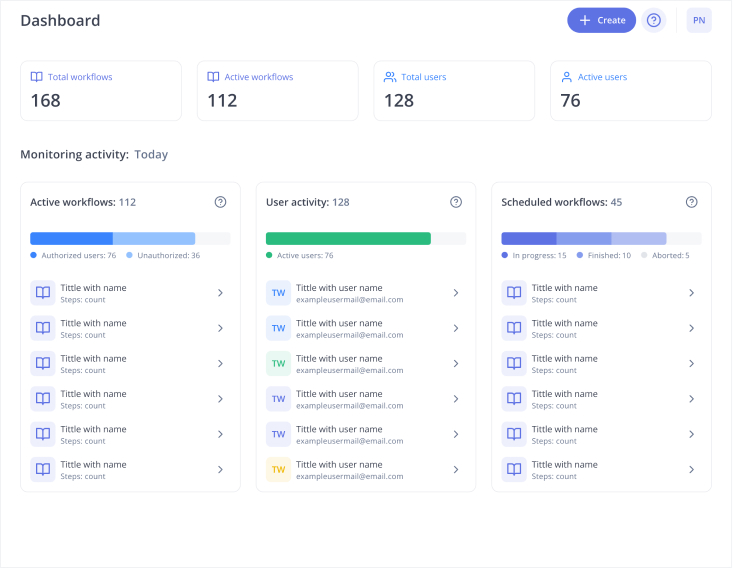Smart Factory
The smart factory is the foundation of smart manufacturing – the concept that redefines how we make things in the 4th industrial revolution. At its core the smart factory is a digital leap forward, using smart factory technologies to automate, optimise and analyse every stage of the production process. Unlike traditional factories where operations are siloed and dependent on human input, the smart factory is a dynamic system that can adapt to changing demand in real time and leverage automated processes to optimise workflows.
Smart Factory Components
A smart factory transformation isn’t just about new equipment. It’s about a complete redesign of infrastructure, systems and workflows. A smart factory operates within a digitally connected ecosystem, integrating machines, people and data to increase efficiency and responsiveness. Effective data acquisition is key to centralising information, automating and improving overall manufacturing processes:
- Cyber-Physical Systems (CPS): These connect physical machines to digital networks so communication and real-time decision making can happen across the factory floor. A cyber physical system integrates these elements to create a cohesive operating environment.
- Industrial Internet of Things (IIoT): Thousands of connected devices gather sensor data from machines to give insight into performance, temperature and throughput.
- Cloud Computing: With scalable computing power smart factories process massive datasets remotely so global data access and on-demand scalability.
- Edge Devices: These acquire data and process locally to reduce latency and increase system responsiveness.
- Smart Factory Software: Monitoring tools, ERP integrations, MES platforms and AI powered dashboards.
- Digital Twins: A digital twin is a virtual model that simulates physical processes, enabling teams to test, optimise and improve the entire production process without disrupting live operations.
Smart Factory Technologies and Automation
Smart factory automation is a combination of smart manufacturing technologies and digital systems:
- Artificial Intelligence (AI): Makes decisions and supports quality control, predictive maintenance and anomaly detection.
- Machine Learning (ML): Learns from historical and real time data to detect patterns and improve system performance.
- Big Data Analytics: Analyzes high-level data, forecasts and operational insights to optimize the manufacturing process through digital technologies.
- Cloud: For scalable storage and centralized system access across global factory operations.
- Augmented Reality (AR): For shop floor training and remote maintenance by overlaying digital information on the real world.
- Digital Twins: Used across smart factory assembly lines to model, test and optimise physical systems.
- Industrial Internet: Connects physical machines to digital control systems for efficient and flexible manufacturing.
- Smart Factory IoT: Analyzes data from connected devices to automate processes through machine to machine communication.
- Active Data: Uses advanced technologies like machine learning and artificial intelligence to provide deeper insights with minimal human oversight, identify trends, anomalies and make predictive recommendations on potential issues or failures.
Data-Driven Smart Manufacturing Operations
Smart manufacturing is all about insights from massive amounts of data. In a smart factory:
- Systems collect data from across the factory floor. It’s important to collect the right data to get the full picture.
- Platforms analyze data to support quick decisions, using action-oriented data to automatically implement changes and corrections based on machine learning and AI.
- AI feeds data into workflows.
- Teams share data across departments.
With big data analysis, smart factories can spot inefficiencies, predict machine failures and areas for continuous improvement.
Smart Factory Applications
Here are some real-world smart factory examples:
- Predictive Maintenance: Using real time data, factories prevent equipment failures before they happen — maximize uptime and minimize repair costs with minimal human intervention.
- Automotive Industry: The automotive industry has already adopted smart factories, with examples like Porsche’s zero-impact facility for electric cars and e.GO’s use of 5G technology in manufacturing. These show how the automotive industry is using advanced manufacturing to be more efficient, sustainable and cost effective.
- Supply Chain Management: Linking supply chain operations to live production data, manufacturers reduce bottlenecks and enable just-in-time logistics, workers monitor systems to optimize.
- Smart Factory Work: Automating repetitive tasks lets human operators focus on strategic decision making and innovation, 90% less human error.
- Digital Transformation Journey: From systems audit to full deployment, digital tools enable scalable and sustainable modernization.
- Smart Factory Benefits: Better product quality, faster response times, lower operational costs and massive increases in output. According to Deloitte smart factories can increase productivity by 12% and labour productivity by 30% compared to traditional factories by 2030.
Conclusion
To define what is a smart factory is to understand the convergence of innovation, connectivity and intelligence. It’s a digital ecosystem where machine learning, cloud computing and human ingenuity come together to create agile, efficient and resilient production systems. Smart manufacturing practices which include AI, big data and IoT are part of these advanced facilities, real time data collection and sharing for better decision making and optimized production processes. Most smart factories use collective insights for continuous improvement in a dynamic and scalable way. As digital maturity grows and the need for adaptability increases, smart factory solutions will not be a nice to have but a must have to survive and thrive in the competitive world of manufacturing.
Simplify the way people work and learn at the frontline
See the industry-leading how-to platform in a 30-minute live demo.
Learn more
